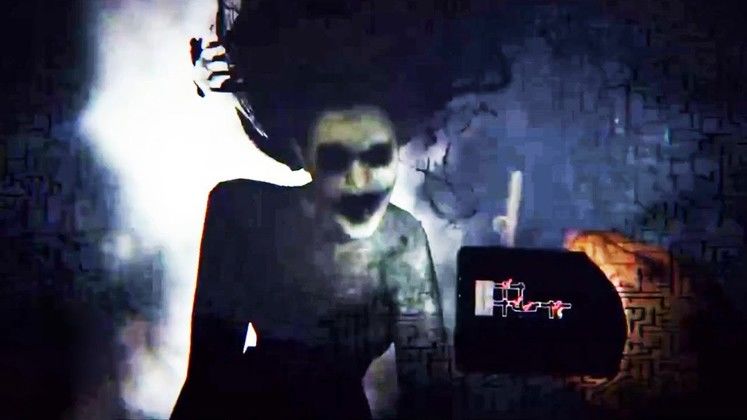Daylight, a procedurally generated survival horror adventure from Atlus and Zombie Studios, ticks each and every cobweb and cliche-laden box, whilst at the same time joins the increasingly popular band of first-person non-combative exploration games currently gracing the indie scene. These tropes need not necessarily be derogatory to the genre overall, but, depending on how they’re delivered, can render certain games scary in all the wrong ways. Daylight, unfortunately, fits the latter guise more often than not.
 |
| A flare a day keeps the ghosts at bay |
After awakening in a strange hospital/prison-like building, protagonist Sarah is dazed and confused, unsure of how and why she came to be sprawled out on the concrete concourse. She dusts herself down and grabs the mobile phone which lies at her side, before an anonymous and somewhat foreboding narrator tells her there is “much to see and much to do” in the facility. Almost immediately, Sarah stumbles upon a note wherein an orderly refers to prisoner 52 as being in an “agitated state” and “raving about the faces of the dark.” Almost immediately, you get a clear sense of where Daylight plans to take you.
As well as facilitating a means of contact between the player and the nameless narrator, Sarah’s newly acquired handset acts as a map, and the phone’s omni-present flash doubles up as a torch - an invaluable component for touring the dank and almost completely powerless corridors of the institution. Glowsticks, activated by number one on the keyboard, are scattered across its grounds which serve to reveal clues on the ominously graffitied walls, and flares, activated by number two, act as the sole means of defense when the ‘faces of the dark’ eventually descend upon the player in their hordes.
Daylight’s story is told solely through letters and memos and newspaper clippings, illustrating tales of past patients and staff gone awry, as well as how the island-presiding hospital was transformed into a prison in its latter years before closure. Needless to say, this story thread does little to dissipate the often overused, and entirely false, suggestion that mental illness is something to be feared. That said, the emergent story of how the institution came to be - spanning the 1930s through to the 1980s - is by far the most interesting part of the game.
In order to progress past each randomly articulated area, the player must collect a series of ‘remnants’ in turn - notes identified in the dark by a red glow - which unlock a memento, used to open a portal to the next area. Moving through each area reveals more about the hospital-cum-prison and its patients, allowing Sarah to delve deeper into her own story. As a non-combative survival horror game, Daylight thrives upon the vulnerability of the player, and the disempowerment leveraged by having no means of defense is a deliberate move to add horror to the experience. Unfortunately for games like Daylight, however, games like Amnesia have showcased this style so well that anything short of Frictional’s lofty standards stands out like a sore thumb.
 |
| Mementos unlock each area |
As Sarah progresses through each stage, the apparitions which stalk the halls of the institution multiply in concert with the depleting supply of anti-ghost flares. As such, if Sarah dies, the player must start the entire section again. Daylight therefore capitalises on its jump scares because, unlike, say, Outlast, each layout is different. Unlike Outlast’s well orchestrated, if at times slightly predictable, frights however, jump scares in Daylight consist solely of the ever-pursuing ‘faces of the dark’, whereupon Sarah’s phone signal begins to break up beforehand, and the UI’s ‘threat’ icon begins to change.
Furthermore, as the ghosts surround the player, Sarah’s health depletes by way of bloodied obstructed peripheral vision, rendering flight increasingly problematic. Too often I found myself minus flares, aimlessly pegging it down corridor after corridor with no obvious means of escape. Death presents a problem when you realise you have to start the entire segment all over again, especially when it took so bloody long to locate five of the six remnants for that particular stage, only to find on restart that the same procedurally-generated level is in fact now entirely different. As such, starting afresh quickly becomes a chore, not a challenge, and therefore no real terror lies in these moments; merely frustration.
Besides a forest section towards the game’s end, which is genuinely quite frightening, the interior of the institution is too samey. Generic poltergeist-esque episodes such as moving furniture, capsized wheelchairs with spinning wheels, and childish giggles plague the halls, yet this is never enough to instil any real emotion, and is certainly nothing we haven’t seen before.
 |
| Where did the hell did you come from?! |
Which is Daylight’s main issue: the vulnerable non-combative first-person exploratory survival horror game has ultimately been done better in other games. There are some half-decent ideas here - particularly the evolution of the hospital - and some fairly decent jump scares, however Daylight is too often too keen to rely on tropes that have been far better served elsewhere.
Upon death, Sarah regains consciousness before the message “You can’t remember, but this seems familiar” lines the foot of the screen. In note-driven Daylight, this is perhaps the most hauntingly accurate passage of the lot.
DAYLIGHT VERDICT
Upon death, Sarah regains consciousness before the message “You can’t remember, but this seems familiar” lines the foot of the screen. In note-driven Daylight, this is perhaps the most hauntingly accurate passage of the lot.
TOP GAME MOMENT
Hospital history lessons.




